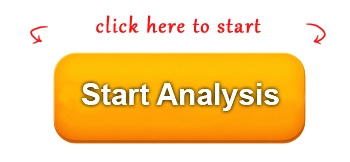"Is your child having difficulty with math or other academics?"
"Wondering if it's dyscalculia?"
Use our free dyscalculia test to get answers. Simply answer a few easy question and find out now 
- Results emailed in minutes
- Digs deep and identifies the exact problem
- Provides suggestions on how to help your child
The most in-depth dyscalculia test on the internet. Identifies the root learning problems. Warns of potential future issues and what to do to prevent them. Provides expertise for your specific situation now. Takes only a few minutes to get the answers you need. Click Here.
Dyscalculia
Dyscalculia is a specific learning disability which affects a persons ability to do math. Much the way dyslexia affects reading, dyscalculia affects math skills. If a person is dyscalculic they will have a difficulty with math concepts. abstractions, counting skills, and many other related skills.
There are several possible underlying skills, that if weak, are the root cause of dyscalculia. Once you dettermine if dyscalculia is the problem then working on the basic learning skills will be very beneficial. Take the dyscalculia test and get on track to a solution.
Math Dyslexia
Dyscalculia is often referred to as "math dyslexia". This actually makes sense. It shares a lot of the same symptoms as dyslexia and can stem from the same or similar causes. Like dyslexia, dyscalculia can stem from processing problems in the auditory, visual, or kinesthetic brain centers. The problems are simply expressed differently than dyslexia. Affecting math instead of reading. Of course, it can also affect both. Treatment is very similar to dyslexia treatment. the difference is more one of emphasis. this is because at a very basic neurological level these learning processes are the same. They are just applied differently when learning math rather than learning reading.
Visual System and Dyscalculia
the visual systems can have an effect on math learning. In fact, they are a fundamental part of learning math. This means both the actual functioning of the eyes and also the brains processing and imagining of images and abstractions. One of the eye functions that affects learning is visual tracking. This is simply the eyes ability to easily follow a line or shape. This function is dependent on the eye muscles, which can be strengthened. When the eye cannot track well this interferes with all other processing. Numbers may actually seem to move or jump. Lining up columns for addition or subtraction may become difficult. Work may be sloppy. These symptoms can also come from a difficulty in brain-eye-hand coordination as well. So the existence of sloppy work does not mean there is a visual tracking problem but it is an indicator that there may be a problem. This dyscalculia screener will help you determine which may be causing the problem as well as providing helpful recommendations for remediating the problem. Of course, it could also be a combination.
Visual Processing and Dyscalculia
Additionally, internal visual systems are critical for math skills. Visual processing skills such as visual closure and visual discrimination speed up processing and therefore make thinking easier and more efficient. Basically taking the load off of other cognitive functions. If these micro-skills are weak it will put additional load on cognitive function and make math very difficult. Fortunately strengthening these skills is relatively easy.
Additionally, learning micro-skills such as visual memory and visual memory manipulation are critical. These skills are what make up visualization. Our imagination is a critical part of math (and reading) and like all cognitive skills, it can be strengthened with simple exercises.
Auditory Processing and Dyscalculia
Auditory processing may not seem like an important part of math but it is. While visual systems are non-linear, auditory systems are linear. Since math is a logical progression the auditory systems can contribute to logic. think about how you would remember a sequence of numbers and letter in which some letters were capitals and some were lower case. You might use the auditory skills to remember the sequence but intertwine that with visual memry to remember the details of the capital letters. The visual memory skills can retain larger amounts of data but auditory is good at sequencing data. The two working in conjunction will give the benefits of both. Our thinking processes are quite amazing in this way.
Difficulty in following instructions, a common symptom of dyscalculia, may be caused by auditory issues. However, just like the example given above, this task is also best carried out by a combination of auditory and visual processing skills.
Kinesthetic Processing and Dyscalculia
Our kinesthetic learning systems are at the heart of learning. Spatial memory is our most efficient form of memory. Using it we can remember amazing amounts of information. Yet kids today are typically very lacking in kinesthetic skills (Proprioception and Coordination). Early on we discovered the strange connection between the kinesthetic learning systems and general academic learning. What we found was that each specific learning disability could also be seen in body mechanics. In the way a child moved when trying to coordinate a specific motion. We also found that by developing proprioception and coordination this also remedied the specific learning disability. This discovery was the beginning of what is not the amazing Learning Success System.
Fix Them All
Many of the learning micro-skill weakness can come in combinations. It is recommended to use a program which treats them all even if they are not all evident. There can be additional benefits for doing so.
This dyscalculia screener will help you determine how to start in the best way possible.

 Use our free dyscalculia test to get answers. Simply answer a few easy question and find out now
Use our free dyscalculia test to get answers. Simply answer a few easy question and find out now